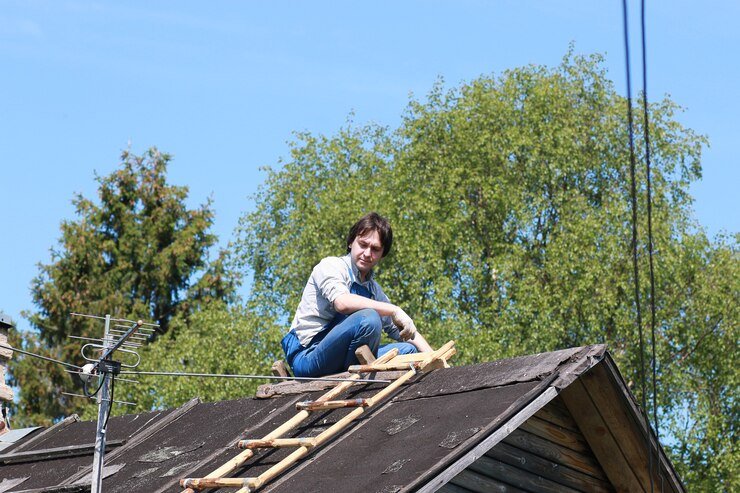After undergoing residential roof repairs, it is essential to ensure that the roof remains in good condition for as long as possible. While repairs can address immediate issues and prevent further damage, they don’t guarantee the roof will continue to perform well without ongoing care. Roof maintenance is an ongoing process that requires attention to detail and timely action. We will explore various methods and practices to help extend the lifespan of your roof, from routine maintenance to environmental considerations and proper ventilation. These practices can make a significant difference in protecting your home and preventing costly future repairs.
Regular Inspections and Maintenance
One of the most effective ways to prolong the life of your roof after repairs is by conducting regular inspections and maintenance. You should inspect your roof at least twice yearly, in the spring and fall, to check for any signs of wear or damage. Look for missing or damaged shingles, cracks, or areas where debris may collect. This will allow you to address minor issues before they become significant problems. Additionally, after heavy storms or extreme weather events, inspecting the roof for any potential damage caused by wind, hail, or fallen branches is important. By staying proactive with regular inspections, you can prevent further wear and ensure that small repairs are handled promptly, avoiding more expensive repairs down the road.
Clean Gutters and Downspouts Regularly
Another essential task to prolong the life of your roof is to maintain clear gutters and downspouts. Clogged gutters can lead to water pooling around the roofline, which can cause water to seep under shingles and eventually lead to leaks or rot. Water damage can quickly compromise the structural integrity of your roof and cause it to deteriorate prematurely. To prevent this, frequently clean your gutters at least twice a year or more if you have overhanging trees or live in a region with heavy rainfall. Ensure that clear downspouts allow water to flow freely away from your home’s foundation. Proper water drainage is crucial for preventing water damage to your home’s roof and foundation.
Trim Overhanging Branches
Overhanging tree branches can pose a significant threat to the longevity of your roof. During storms or windy weather, branches can scrape against the roofing material, causing abrasions or even leading to broken shingles. Furthermore, fallen branches can create blockages in gutters or cause other types of damage. To protect your roof, regularly trim tree branches too close to the roofline. Trimming branches that could potentially fall during storms or high winds is especially important. By keeping trees well-maintained and away from the roof, you reduce the risk of physical damage and ensure that the roof remains intact for longer.
Ensure Proper Ventilation
Good ventilation is vital for maintaining the health of your roof. Poor ventilation can lead to moisture buildup in the attic, promoting mold or mildew growth and damaging the roofing materials. In hot weather, inadequate ventilation can cause heat buildup in the attic, which may lead to shingles becoming brittle or warped. Ensure your attic has proper airflow to ensure your roof lasts as long as possible. This includes installing vents at both the ridge and the eaves to allow hot air to escape and cooler air to circulate. If your attic feels excessively hot or humid, consider installing additional ventilation to help regulate temperature and moisture levels.
Address Leaks Immediately
Leaks are among the most significant threats to a roof’s longevity. Even a small leak can lead to severe water damage and compromise the structure of your home. After your roof repairs, you must watch for any signs of leaks, such as water stains on the ceiling, wet insulation, or visible drips in the attic. If you notice any indication of a leak, address it immediately. A prompt response can prevent the problem from worsening and causing additional damage to your home. If the source of the leak is not immediately apparent, it may be necessary to call a roofing professional to inspect the area and ensure the issue is resolved.
Install Roof Coating or Sealant
Applying a roof coating or sealant is another method for protecting your roof after repairs. These coatings help waterproof your roof, protecting it from harsh weather conditions and UV rays. They can also provide an extra defense against moss, algae, and other growths accumulating on the surface. Depending on your roof type, a sealant can enhance its durability and reduce wear and tear caused by sun exposure and precipitation. Consult The Roofing Dudes to determine which coating or sealant best suits your roof’s material and climate.
Ensure Proper Insulation in the Attic
Proper insulation in the attic is another factor contributing to your roof’s longevity. Insulation helps to regulate temperature and prevent heat from escaping through the roof. Without proper insulation, the roof can experience significant temperature fluctuations, which can cause shingles to expand and contract, ultimately leading to cracking or warping. Additionally, inadequate insulation can cause condensation in the attic, resulting in water damage to the roof structure. Ensuring your attic is properly insulated will not only improve the overall energy efficiency of your home but also help protect the roof from temperature-related damage.
Extending the life of your roof after residential roof repairs requires proactive care and maintenance. Regular inspections, proper drainage, tree trimming, and good ventilation are essential practices that can help protect your roof from damage. Additionally, addressing leaks immediately, using protective coatings, and maintaining proper insulation will reduce the likelihood of expensive future repairs. By taking these steps, you can ensure that your roof remains in good condition for years, providing reliable protection for your home and family. Regular care and attention are key to maximizing the lifespan of your roof, saving you time and money in the long run.
